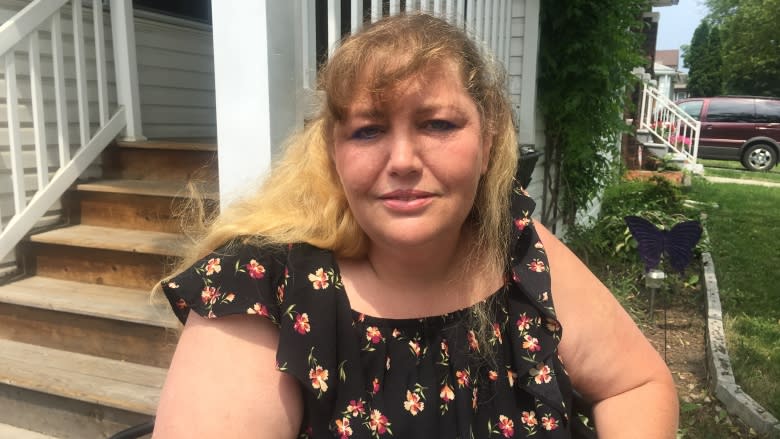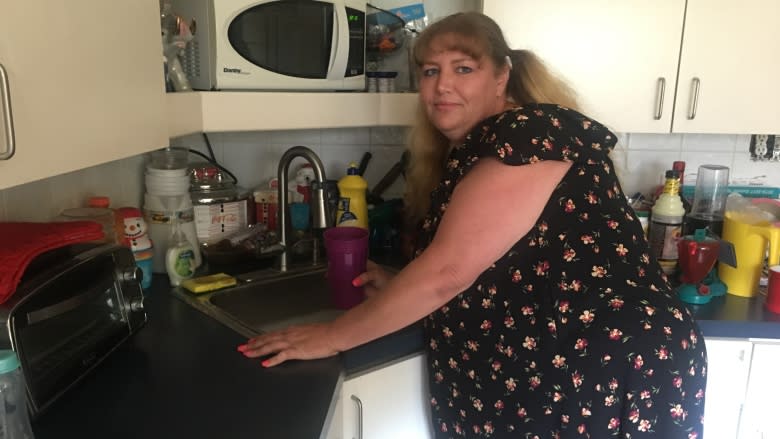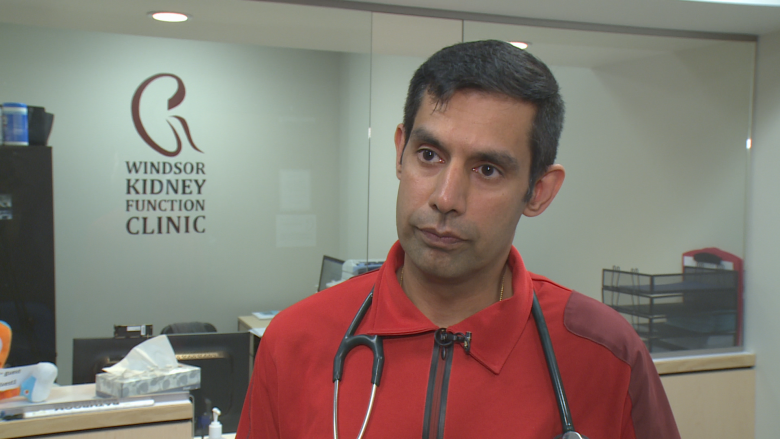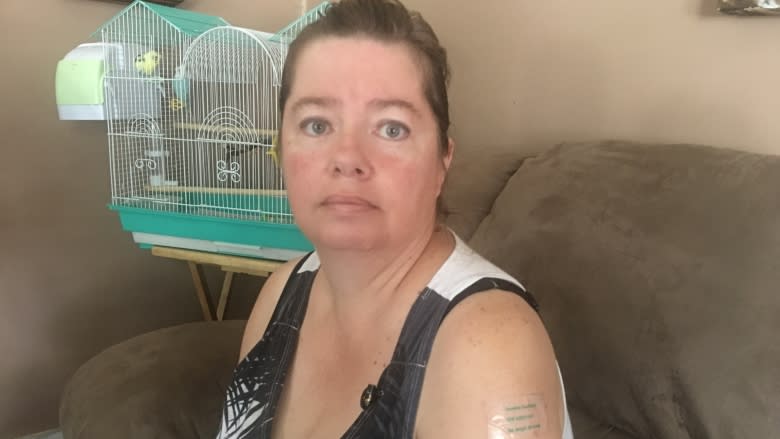Doctors 'gun shy' to prescribe opioids hurting those in pain, say experts
A Windsor, Ont. woman who relies on prescribed narcotics to help with chronic pain believes "responsible" opioid users are being unfairly victimized in the government crackdown on drugs like Fentanyl.
Jennifer Butcher has been unable to find a physician who will refill her prescriptions ever since her family doctor retired last month. She's not alone, according to medical professionals and other patients in Windsor who say a spike in deaths across the region and province has doctors reluctant to prescribe opioids.
"I don't feel like a functioning, productive member of society anymore," said Butcher. "I am looked down upon by 90 per cent of the people I talk to, including doctors and pharmacists, because of the types of drugs I've been prescribed."
Butcher, 46, suffers from fibromyalgia, carpal tunnel syndrome and arthritis. She has neck and back pain from a car accident when she was a teen and has difficulty standing for long periods of time.
She relies on her walker to get around and has been using pain medication for more than 20 years. Her pain has been compounded in recent weeks by the gnawing pangs of withdrawal.
"People like me are slipping through the cracks. I've talked to a few people in my situation that really feel there's going to be an uprise in suicides because of this," she said. "People don't want to live in pain and suffering every day — it's no way to live. If I had cancer, they wouldn't say, 'We're not going to give you chemo because it might kill you.'"
'Distinct shift'
Angela Lambing has seen a "distinct shift" in how pain management is being addressed. The nurse practitioner believes physicians have become "gun shy" when it comes to prescribing opioids. She'd like to see medical professionals receive more pain management training.
"It's like anything else, you have one patient that misused, you worry that another patient is going to do it too," said Lambing. "Physicians are saying there's going to be a higher rate of suicide because patients aren't going to get what they need and they're going to have significant pain, which is difficult to live with."
Reluctance on the part of physicians is no surprise, considering the provincial government in October announced what it called its first comprehensive opioid strategy.
The moves comes after a steady increase in opioid-related deaths and injuries for more than a decade, according to Public Health Ontario. The latest available statistics are for 2015, when the province recorded more than 730 opioid-related deaths, which is a 99 per cent jump from 2003 figures.
Numbers for emergency room visits are a little more up to date, with 4,420 patients showing up at ERs with opioid-related problems, compared to 1,858 in 2003. Those figures represent a whopping 137 per cent increase.
But as prescription medication dries up, Lambing, who has worked at Detroit's Henry Ford hospital for 25 years, fears people in pain will turn to the streets.
"They're going to be taking medicines off the street that are cut with who knows what, and then we're going to have the same issue that we're already seeing with that fentanyl," she said.
Doctors are 'being cautious'
Dr. Amit Bagga, the president of the Essex County Medical Society, acknowledged doctors are now more "cautious" about prescribing high-dosage opioids to patients with non-cancer pain.
"There are guidelines, and the College [of Physicians and Surgeons] is watching physicians and supervising the dosages that are being used," said Bagga. "So one is being cautious, one is being careful."
He said doctors need to balance their responsibility to manage pain with the havoc being wrought on the streets by powerful opioids, which is being described by officials across the country as an epidemic.
"There is appropriate use, but there is misuse. There's people selling it on the streets, there are people using high doses getting into accidents," said Bagga. "So at the societal level, physicians are a bit of a gate-keeper, and we have to kind of respect that they are in a tough position."
Like Butcher, Marcie Porter feels like collateral damage in the battle against the opioid epidemic. She suffers from fibromyalgia and has been taking fentanyl patches and Percocets to ease the pain. Her family doctor shuttered his practice two months ago and now Porter only has enough medication to last another month.
She said she has called 12 doctors, many of whom are taking new patients, but none will see new patients looking for pain medication.
"I feel like we're being discriminated against because they don't know us as a person," said an exasperated Porter. "We're being looked at as a different person because of the epidemic — and I get the epidemic — but it's not fair to us that need [opioids] and actually don't abuse it."
Porter stressed she is a responsible opioid user in desperate need of pain medication.
"I would like to see doctors looking at people who are in pain more, not to look at us as a druggie or somebody that's taking them on the streets because that's not true," she said. "I take mine back to the pharmacy every time that is needed and I've been tested every time when I go to the doctors."
Refusals must be 'in good faith'
In an email to CBC, the College of Physicians and Surgeons of Ontario says its Accepting New Patients policy states doctors must accept new patients "on a first-come, first-served basis."
However, there are exceptions "if a patient's medical needs don't align with the physician's clinical competence or scope of practice. This type of situation would be grounds for refusing a prospective patient. The policy also says that such decisions to refuse must be made in good faith."
Butcher has been taking pain management drugs for more than two decades now, starting with Tylenol 3s and moving on to Percocets, Oxycontin and finally fentanyl patches.
She has gone through five physicians since her family doctor retired and none of them will refill her prescription. She is living in pain and fears what may happen to others who may seek solace in the streets.
"The people that are getting addicted now and that are dying, a lot of times it's because they can't get what they're used to being prescribed," she said. "Then they turn to the streets and they either go towards heroin, which can be cut with anything, or these new fentanyl patches. They don't realize that the liquid inside — you cannot drink, lick, smoke or shoot. You have to wear the patch."






